


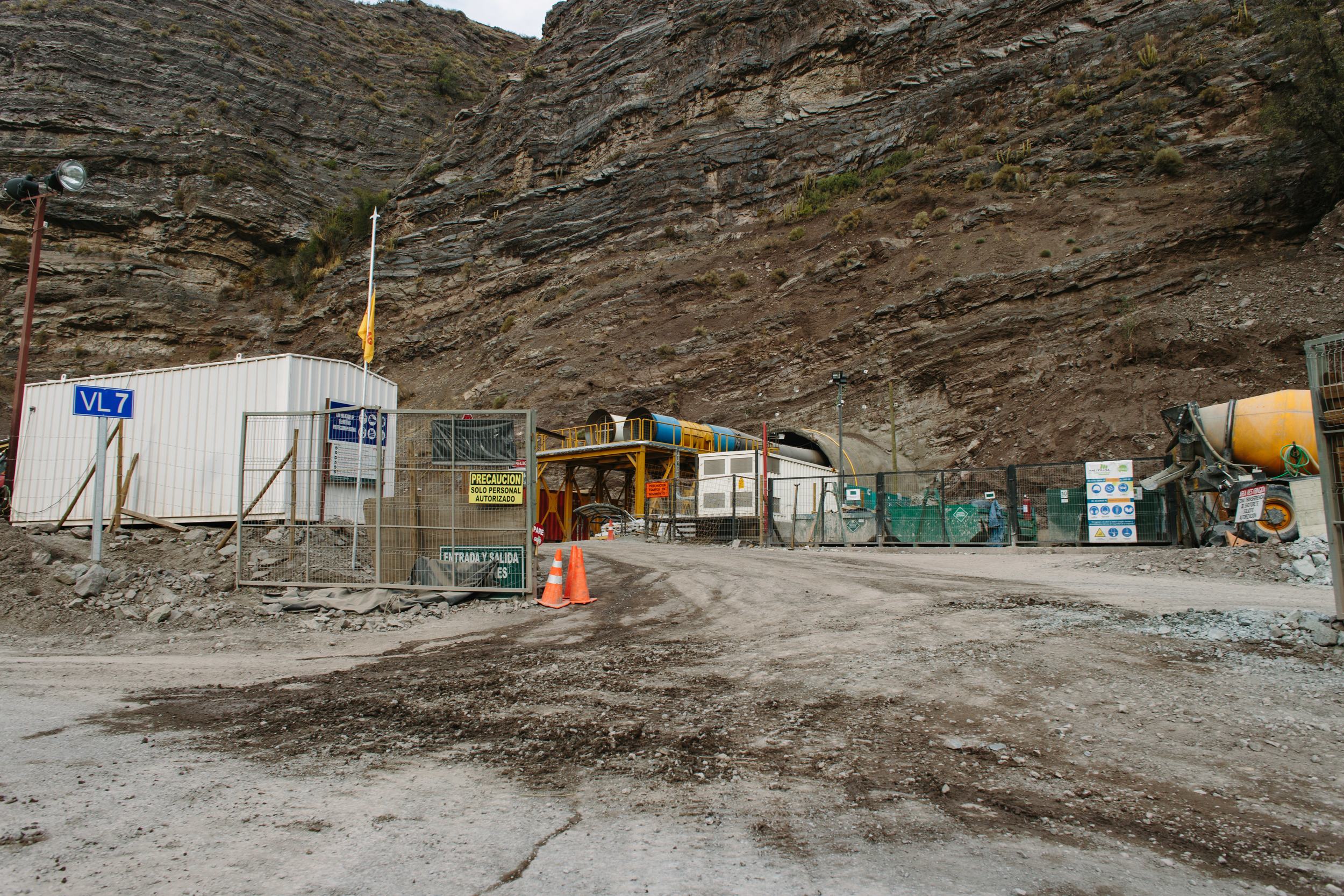

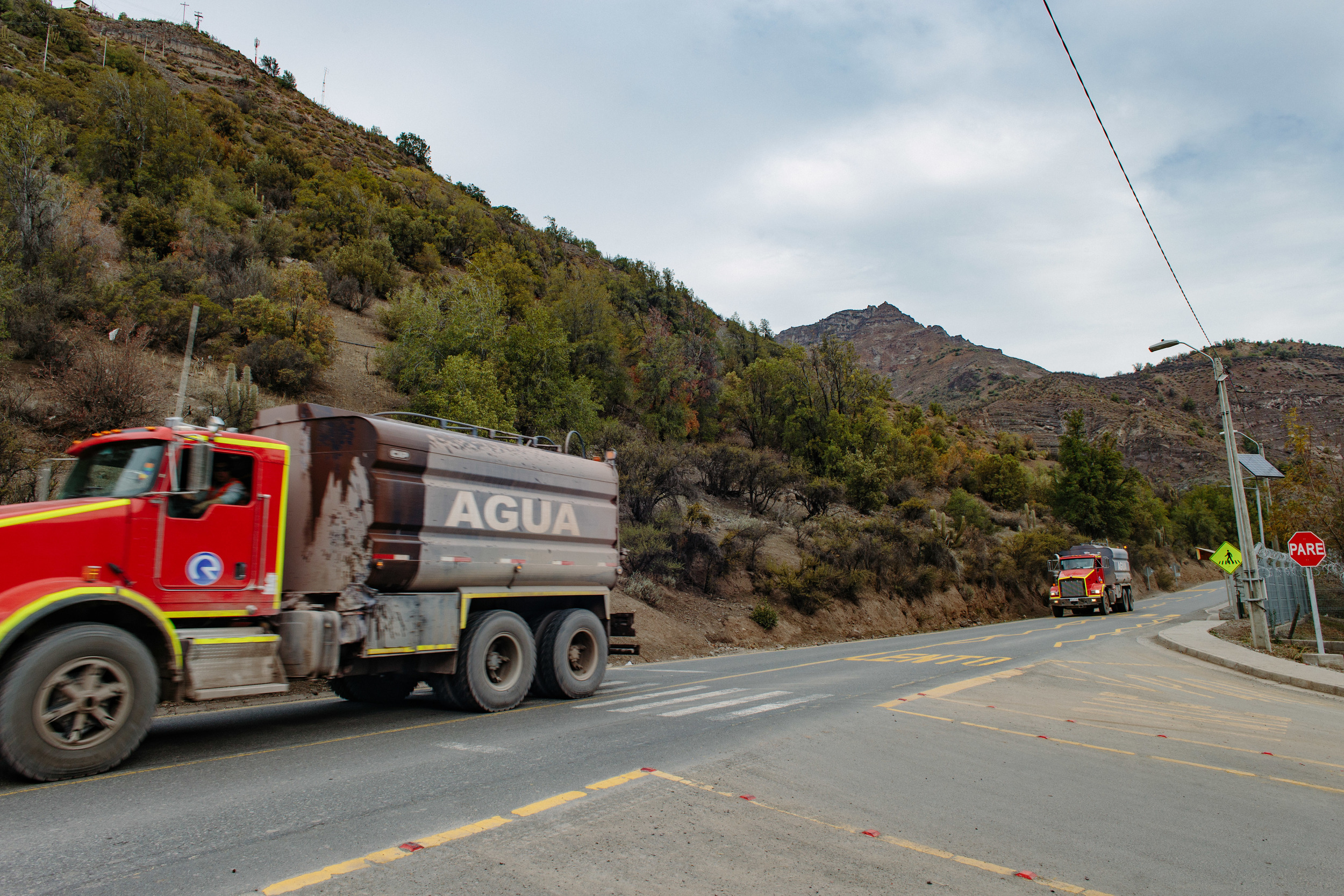


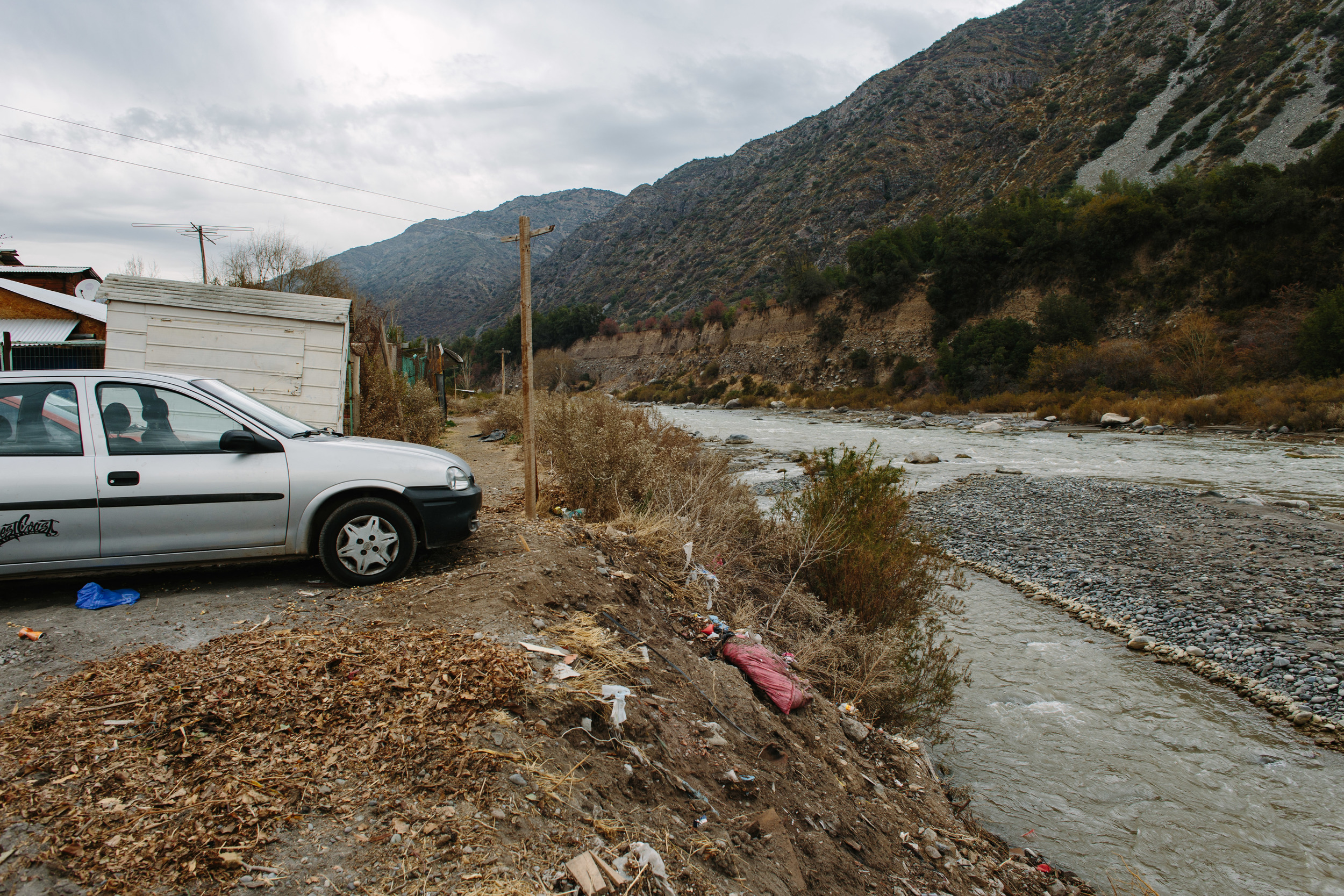


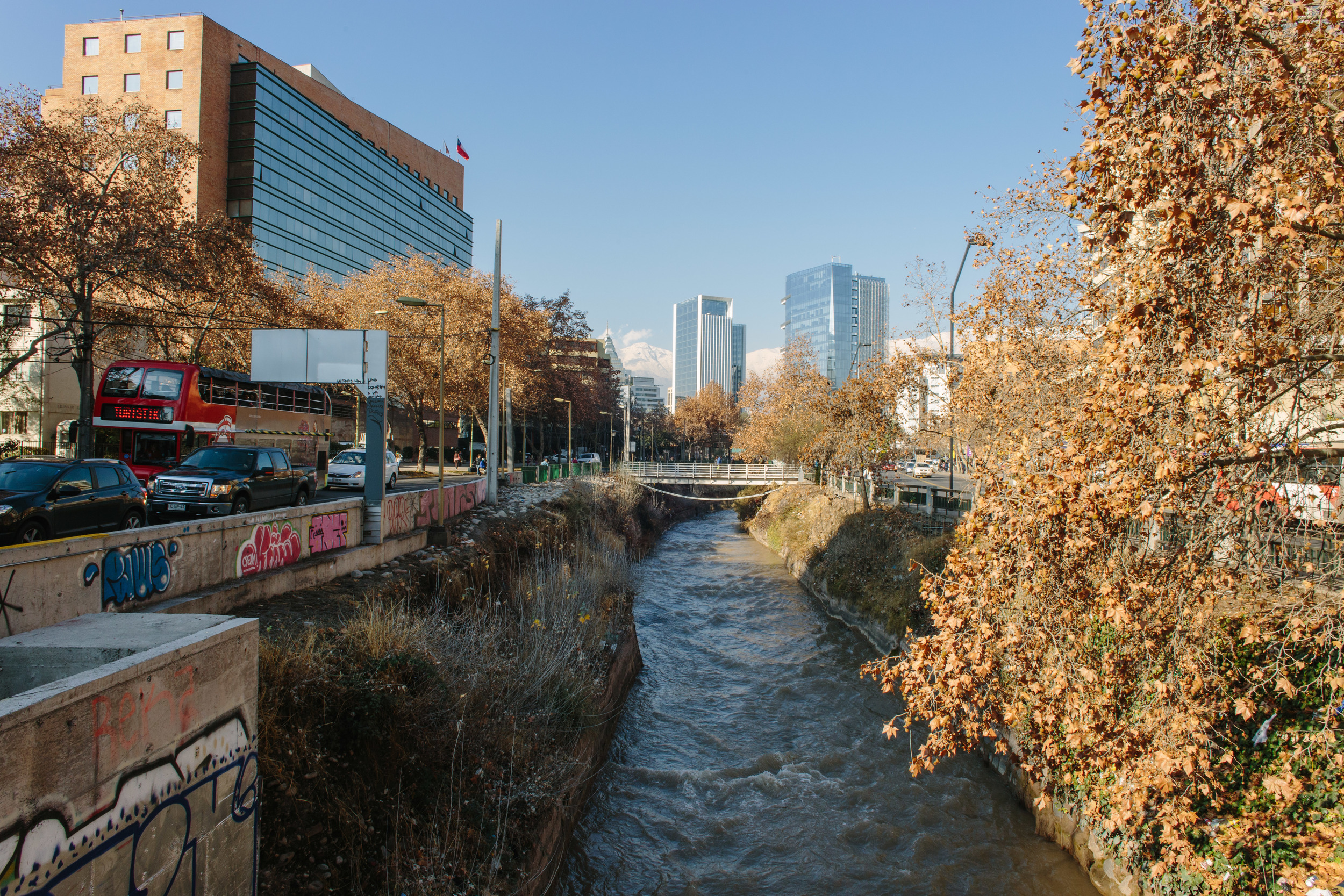
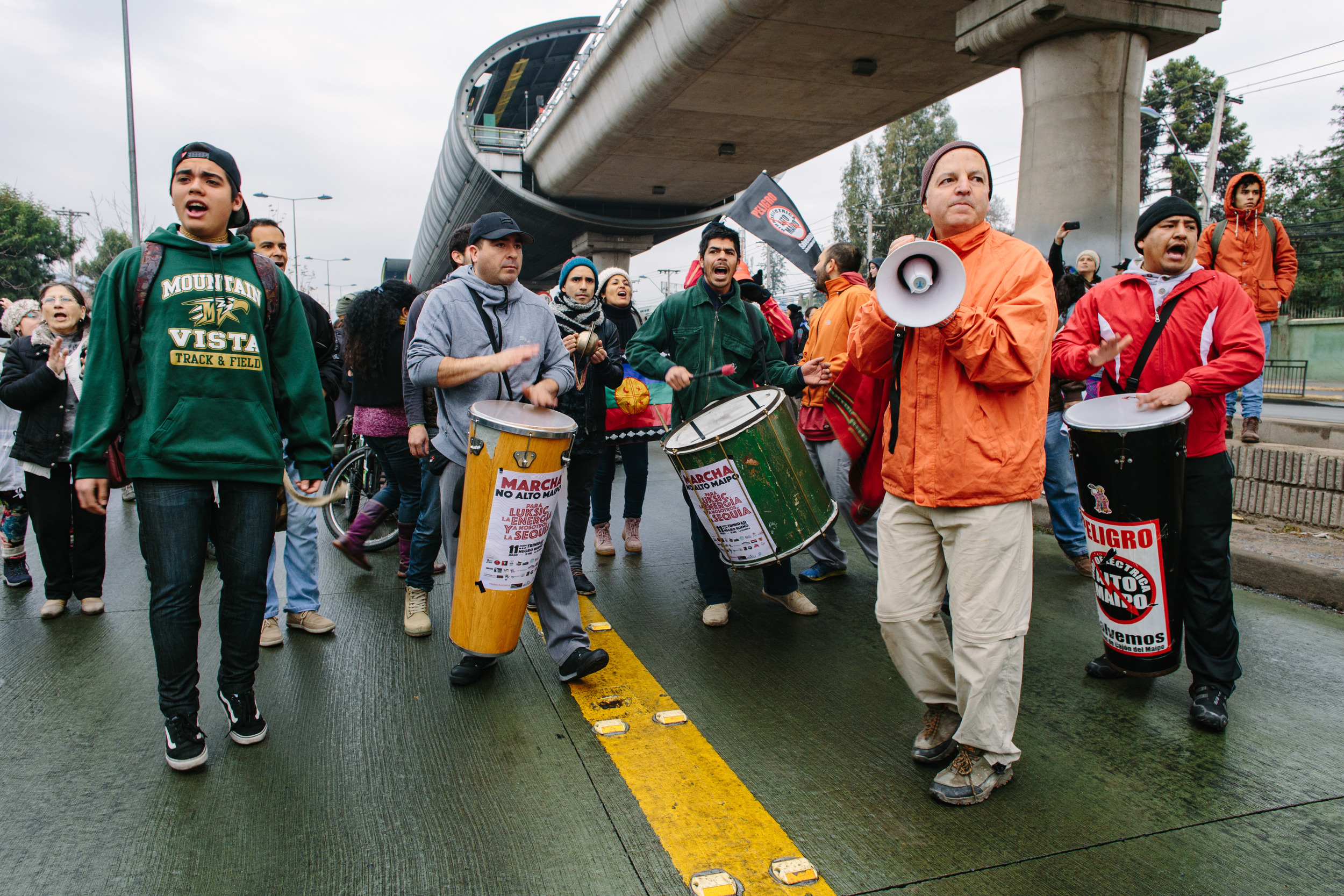


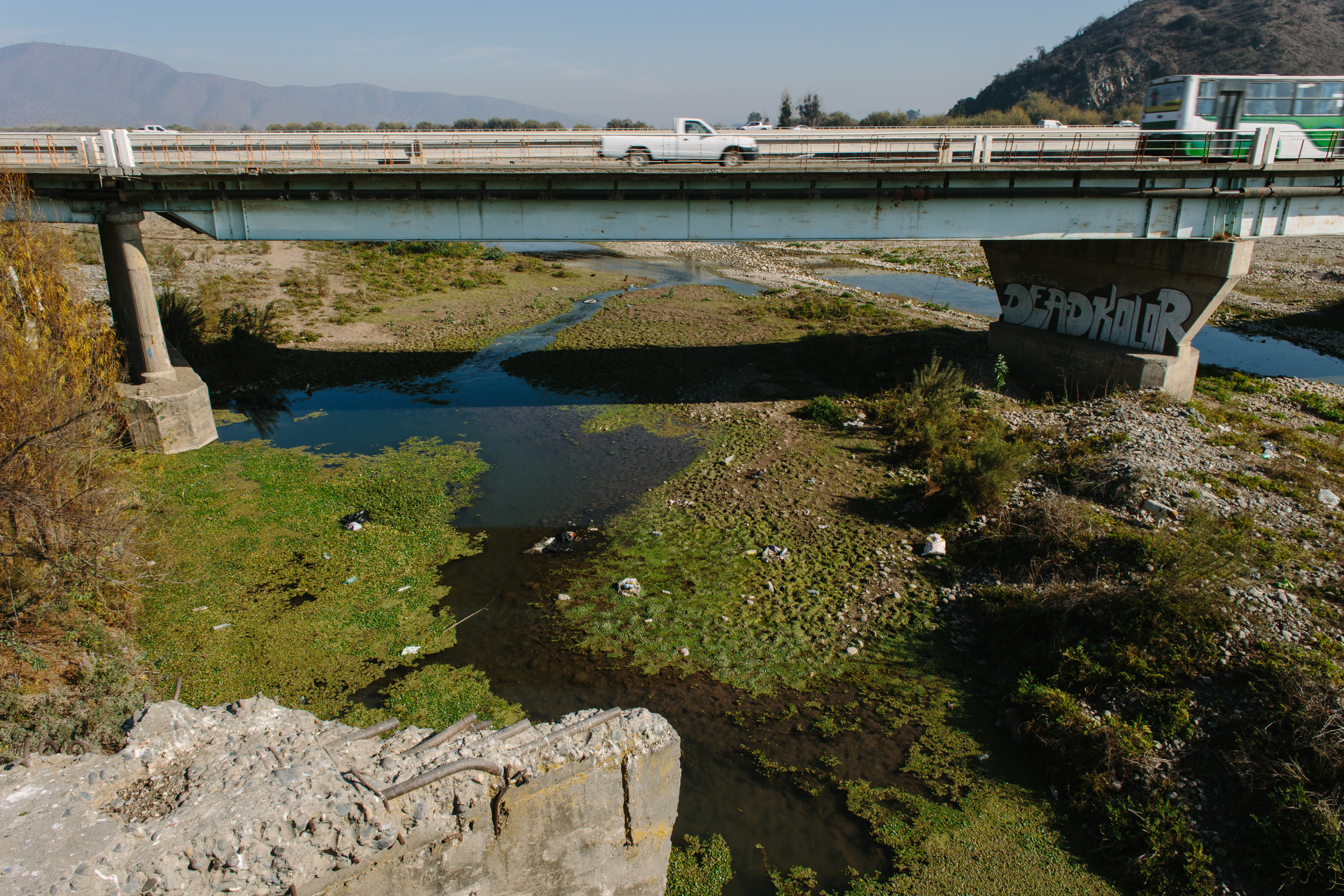

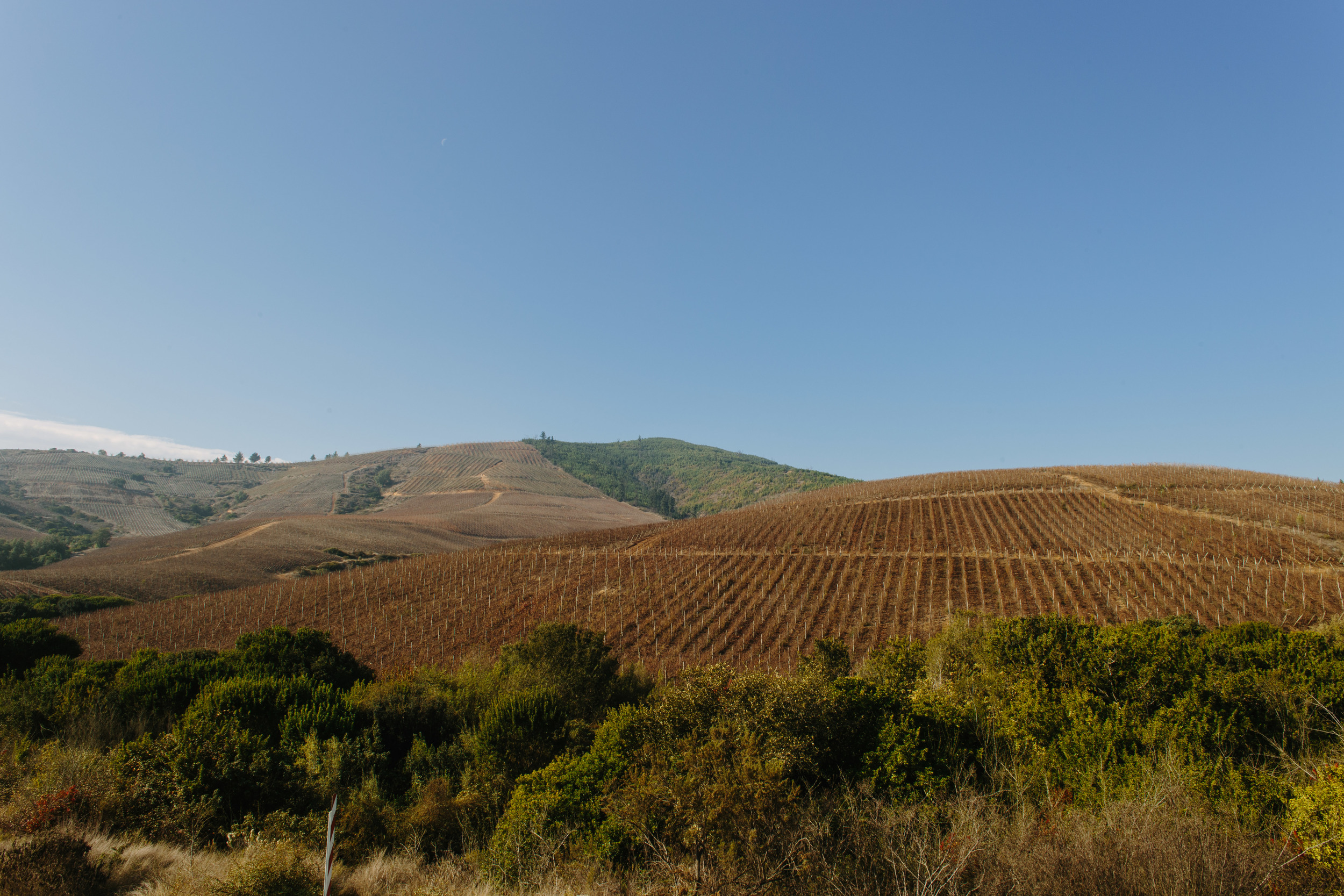

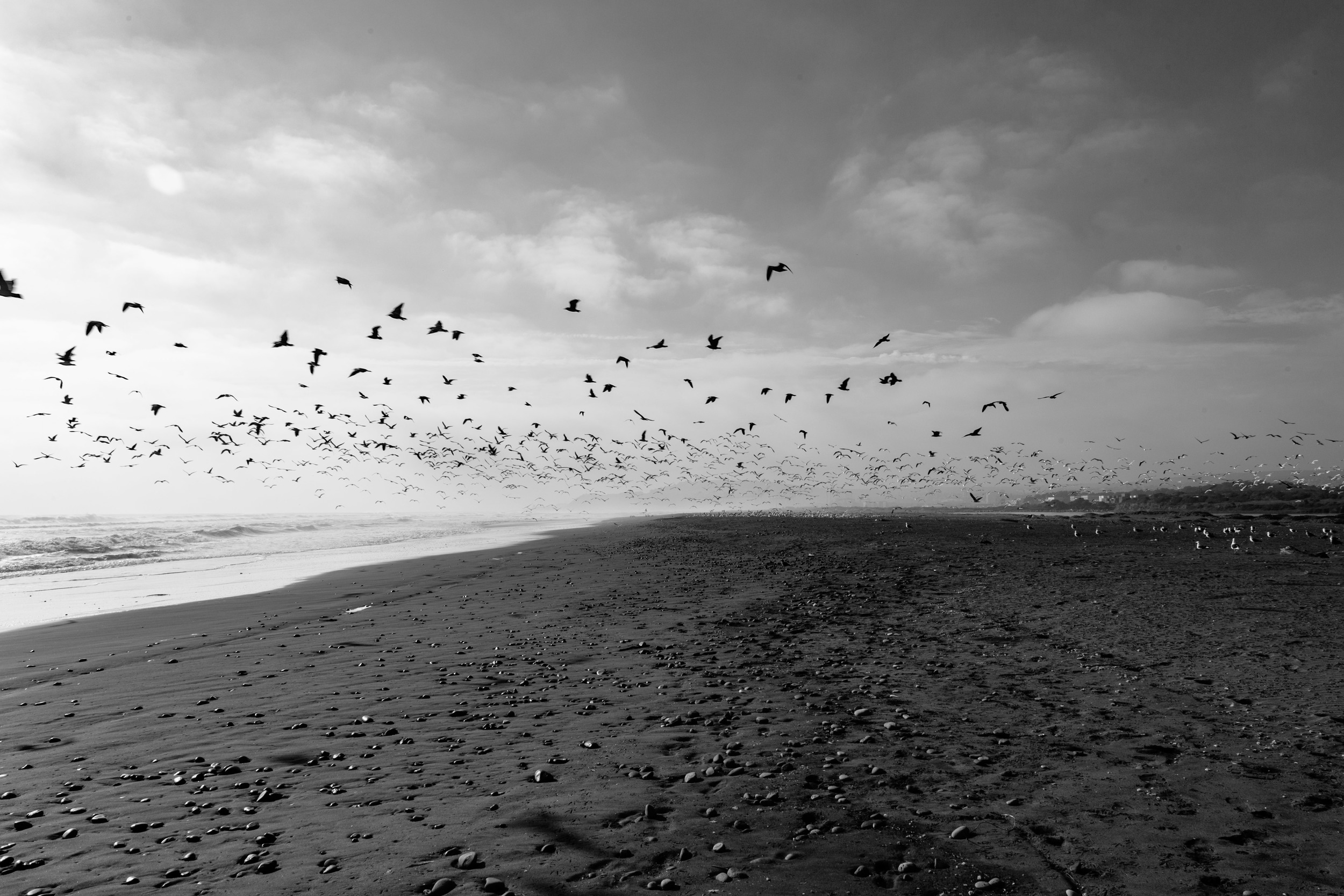

This collection of photos tells the story of social and environmental change in the Maipo River basin, from the Andes Mountains to the Pacific coast of central Chile. Climate change, rapid economic development, and mounting social tensions have left their mark on this critical river basin. The Maipo River provides drinking water for Santiago, irrigation for an important agricultural sector, and hydroelectricity for growing urban and industrial needs. It also supports rural livelihoods and critical ecosystems, which are increasingly threatened due to scarcity and competition. Photographed during June and July of 2015 with University of Arizona researcher Sophia Borgias.

The upper part of the Maipo River basin, known as the Cajón del Maipo for its box-like canyons, is a well loved for its tourism, recreation, and conservation. The area is often referred to as the “lungs of Santiago,” and is filled each weekend by Santiaguinos looking to escape the smog.

The Cajón del Maipo has a long history of hydroelectric development. The Maitenes plant, built in 1923 by AES Gener, is one of the Cajón’s several run-of-the-river hydroelectric plants (meaning no dam and all water returned to the stream).

AES Gener’s most recent project – though still euphemistically called “run-of-the-river” – is of an entirely different scale. Construction of the Alto Maipo hydroelectric project began in December 2013, drilling more than 60km of underground tunnels through which to divert water from three of the Maipo’s main tributaries.

The influx of thousands of construction workers into the small towns of the Cajón del Maipo has been a major source of tension among local communities. Some people are thankful for the spike in business while others refuse service to the workers.

Trucks and machinery fill the roads of the Cajón as construction of the Alto Maipo project progresses.

The No Alto Maipo movement, now in its 9th year of resistance, argues that the project endangers the city’s water supply, poses harmful impacts to the river ecosystems, and jeopardizes the local tourism economy.

Aguas Andinas is the private water company that supplies the Santiago Metropolitan Region with potable water, 90% of which comes from the Maipo River. In the Cajón del Maipo, however, many people (some say as high as 40%) lack access to potable water and plumbing in their homes.

Tucked out of sight of the tourist’s view of the Cajón, this small riverside neighborhood has no running water, and residents rely upon water truck deliveries once a week to fill the tanks and barrels outside their homes.

Just downstream from the Cajón, the Maipo River is diverted into large canals, such as the one in the forefront of the photo, leaving just a small stream that must wind its way through a river bed torn apart for the sand and gravel needed for construction in Santiago.

A tributary of the Maipo, the flow of the Mapocho River through Santiago historically supported settlement in the city. Today, however, Santiago is home to more than five million people and the Mapocho is but a trickle.

The San Carlos canal was built in the 19th century to solve scarcity issues by diverting a large portion of the Maipo’s flow through Santiago to the Mapocho.

“Without water there is no city.” With this slogan the No Alto Maipo movement has expanded into Santiago and built solidarity with other movements struggling against projects that they feel prioritize private economic interests over the wellbeing of local communities.

Less than 50 miles outside of Santiago, the Maipo River runs dry for a segment, its flow consumed by the city and the agricultural fields.

Flow is replenished bit by bit as excess irrigation water seeps back to the stream, the effects of a sixth year of drought made harshly apparent by the vast empty riverbed.

Split into three sections for management purposes, the Maipo River has a very different face here in the second section than it does in the plentiful upper section.

Once again a river, having been joined by the Angostura and the Mapocho, the Maipo flows out of the Metropolitan Region and into the Valparaiso Region toward the coast.

Mass production of grape, olive, and citrus envelops the hills of the lower basin as agro-industry expands, using Maipo water supplemented by groundwater pumping.

Finally reaching the Pacific, the Maipo comes alive with birds. This estuary habitat has just been recognized as a site of international importance for migratory birds, which will hopefully inspire efforts to keep the river reaching the sea.

For more information about project research, please contact Sophia Borgias: sborgias@email.arizona.edu
For more information about the No Alto Maipo movement please visit: